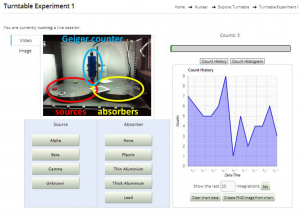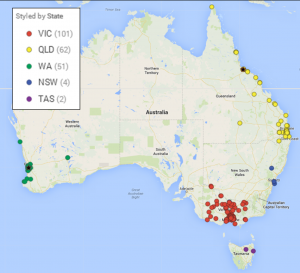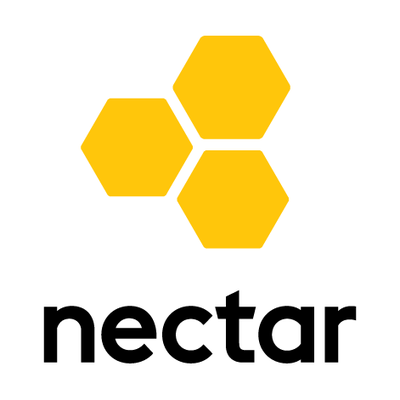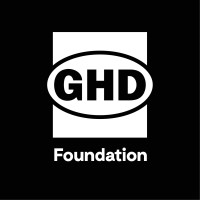Freely Accessible Remote Laboratories (FARLabs)
Through the establishment of a virtual laboratory network this project will bring the state-of-the-art facilities and world-class research of Australia’s Universities directly into our schools to engage high-school students with science and maths nationally. What this video to learn more:
The primary goals of FARLabs include:
- The development of new laboratory projects with high-school access via our e-Virtual laboratory targeted at secondary years 7-12 which are fully integrated with our state-wide curriculum. Once the program is available nationally we will consider the curriculum of other states, and the impending national curriculum.
- The establishment of a website (including discussion forums) summarising the virtual experiences available, and including downloadable teaching materials and technical notes. This will allow students and teachers to choose a level of engagement appropriate for their needs and abilities.
- Promotion, demonstration, and explanation of the La Trobe e-lab project at schools within our local catchment areas (including regional schools near the Bendigo campus). This will be coordinated through the Quantum Victoria Physical Sciences cluster node.
- The expansion of the virtual lab project to other subject areas such as Agriculture and Molecular Sciences and to other Universities and expansion of project to a national level. This will build on existing networks, such as the Australian Institute of Physics and the Innovative Research Universities consortium.
Project partners
This project builds upon, and extends, several existing partnerships between schools, existing laboratory-based outreach programs, regional-capital intra- and inter-institutional collaborations, e-research infrastructure, and industrial partnerships.
La Trobe University is working with James Cook University, Curtin University, Quantum Victoria, the Australian Institute of Physics, and the Victorian eResearch Strategic Initiative.
Remote Control Labs*
How you can run live practical classes, for free, over the internet
*Article originally published as “Remote Control Labs” in Labtalk, Vol. 58, Number 2, pp18-20 2014. Reproduced with permission from the Science Teachers’ Association of Victoria.
FARLabs is a new, government sponsored initiative allowing Victorian teachers and students to dial-in from their classrooms and remotely operate science equipment based at three universities. Developed in direct consultation with Victorian high school teachers, this program is one of the first of its kind in the world as it has been designed, from the outset, to bridge the gulf between secondary and tertiary science education.
Background: The importance of practical science experiments
A report by the office of the Chief Scientist in 2012 showed how Australian students are turning their backs on science, with just 51% enrolled in any science subject for Years 11-12. In response to the report, the President of the Australian Science Teachers Association, Anna Davis, highlighted the importance of practical experiments in enthusing students. “[There are] still a lot of teacher demonstrations and that means that we’ve got a lot of students who are sitting back being spectators, not being actively engaged.”
Taking an active part in experiments is an important part of what makes science come alive. For many students, it is an essential part of the learning process. Yet many teachers do not have access to the necessary resources. The problem is, labs are expensive. It would require a considerable economic commitment to provide access to science equipment to every child, especially in a country as vast and disparate as the Island continent of Australia.
The FARLabs (Freely Accessible Remote Laboratories) initiative is a direct response to this problem. Funded through the Australian Maths and Science Partnership Program (AMSPP), FARLabs presents a technological solution to the challenge of providing engaging, yet cost-effective, practical experiments to a whole population of secondary schools across the country.
The remote-laboratory concept has the potential to transform how practical science is taught at secondary school and to help reinvigorate the interest of students in both science careers and science generally. Following the launch of FARLabs in October 2013, Professor Ian Chubb, the Chief Scientist of Australia said, “We identified how the teaching of science and mathematics in an inspiring way might attract more students to them. An initiative like FARLabs is a great start. I hope universities and secondary schools around the country can introduce projects like this on a significant scale.”
What is FARLabs?
FARLabs (www.FARLabs.edu.au) provides high school teachers and students with online access to scientific equipment for use in pre-prepared, curriculum-relevant, practical experiments. The platform consists of three main components: 1) the equipment, 2) the website portal and 3) the teaching materials. Teachers and students access the equipment via the website portal. Instruction and background knowledge are provided by the teaching materials.
All of the experiments have been aligned with both the middle school years (7-10) and VCE curriculums, as well as the Australian national science curriculum. The curriculum map is available in the ‘For Teachers’ section of the FARLabs.edu.au website.
Four self-contained laboratory activities are currently available. They cover three main themes: Nuclear, Environment and Structure. All content and activities are laid out using the 5E instructional model (Engage, Explore, Explain, Elaborate, Evaluate]. We have found that structuring the content within a recognisable learning framework reduces prep-time for teachers, and allows students to become quickly immersed in the content.
An Overview of the Available Experiments
The Nuclear theme currently contains two activities, both of which are hosted by the Department of Physics at La Trobe University. They each allow students to manipulate radioactive material (including gamma ray sources), substances which are typically difficult to obtain at high school level due to Operational Health and Safety requirements.
Experiment 1:
The ‘Inverse-Square Law’ experiment shows students how radiation intensity decreases as a function of distance. The student controls the position of the source relative to the Geiger counter and a live webcam displays the equipment as it moves. The student collects real-time data of count-rate vs time.
Experiment 2:
The ‘Turntable’ experiment illustrates the penetrating power of different forms of radiation. The student can choose to pair one of four sources (alpha, beta, gamma, unknown) with one of 5 absorbers (including no absorber at all). A live data feed shows the live count rate from a Geiger counter placed above the selected radioactive source.

Screenshot (annotated) of the FARLabs ‘Turntable’ experiment. A live video feed displays the sources, absorbers and the Geiger counter (top left). When the student selects a new source and absorber, the turntables rotate to position them below the counter. The live data feed displays count rate versus time and is updated on a second by second basis.
The Environment theme hosts two activities illustrating the power of both sunlight and wind.
Experiment 3:
The ‘Solar Water Heater’ experiment uses equipment designed to provide cheap hot water for outback locations in Australia. The water tank is equipped with 18 temperature sensors to show the distribution of temperature throughout the tank (the tank is located on the roof of the physics building at La Trobe University). Ambient air temperature is also recorded and photovoltaic cells measure solar intensity. Real-time data of temperature versus time is constantly streamed. Students can observe the correlation between tank temperature and time-of-day, and so learn about the energy contained in sunlight. This temperature data is also used to determine whether or not the water may contain dangerous levels of Legionella bacteria, by referring to the relevant Australian standard.
Experiment 4:
The cyclone testing station (available May 2014) explores the potentially damaging effects of extreme weather systems (phenomena which are increasingly frequent in Australia due to the effects of climate change). The experiment uses a wind-tunnel housed at James Cook University in Townsville. A model house with a protruding roof sits inside the wind-tunnel. Four force sensors measure the real time pressure distribution across the roof as a function of wind velocity. Students work out the wind velocity required to strip the roof off of a house.
The Structure theme explores the ways scientists reveal the shape of objects.
Experiment 5:
The first Structure activity is Young’s classic “Double Slit” experiment using the Educational Virtual Beam-Line (E-VBL) at the Australian Synchrotron, and is aimed at Year 11-12 students. The equipment consists of a light source (either a HeNe laser, or the Optical Diagnostic Beamline from the synchrotron, depending on what is available), a slide containing four different double-slit configurations, a motor stage to align the light source with each of the different slit configurations, and an imaging detector to record the resulting interference pattern. The software enables web-based control of the motors, and shows real-time video images of the diffraction pattern and a plot of the intensity distribution across the detector. This interface is hosted on the Australian synchrotron network.
How can you use FARLabs?
FARLabs is online and it is free. Your first step is to log on to www.farlabs.edu.au and register as a teacher. That’s it! You can now book equipment and run your classes.
You do not need to pay. You do not need to download or install software. All you need is an internet connection and a standard web browser.
FARLabs is designed to save teachers time. Each experiment is a self-contained unit, containing downloadable student notes, teacher notes, student worksheets, quizzes, videos and examples of the impact that science has on society. Besides providing informative and engaging content, the materials provide pathways for students to understand the process of scientific research.
Impact
To date (11th April 2014), 185 schools and over 300 teachers have registered for the FARLabs program. These numbers are increasing every day. The registered schools are spread across 5 states. Some of the schools are in isolated, rural environments, hundreds of kilometres from the nearest university. The uptake of the program by rural schools is hugely significant as these are often the most under-resourced in the country, and thus have the most to benefit from remote labs.

Map of Australia showing all 220 secondary schools linked to the FARLabs program. Schools are colour coded as red (Victoria), white (Western Australia), blue (New South Wales), yellow (Queensland) and purple (Tasmania).
The response from teachers and students has been overwhelmingly positive, as reflected by the feedback from workshops. The teachers have commented upon:
• The flexibility of the portal as a ‘walled garden’ in which students can be directed to pursue lines of inquiry of interest to them, while keeping within a curriculum-relevant theme.
• The availability of data-sets linked to engaging real-life scenarios (maths teachers).
• The engaging nature of the combination of video and data feeds, particularly when a link is made with an individual scientist.
• How quickly they can assess which experiments were appropriate for them, and how they could rapidly prepare their lesson plan.
• The thoroughness of the supporting material, allowing several 90 minute sessions to be made out of each experiment.
Who is behind FARLabs?
FARLabs is led by the Department of Physics at La Trobe University in collaboration with James Cook University, Curtin University, Quantum Victoria, the Australian Synchrotron and V3 Alliance. Register for free at www.farlabs.edu.au to use the service. Contact us at latrobefarlabs@gmail.com. FARLabs is supported by the Department of Education as an Australian Maths and Science Partnership Program (AMSPP) priority project.






[…] spoke about The Freely Accessible Remote Laboratories (FARLabs) project, an online platform allowing high school students to interact with pre-prepared and […]